Harbour porpoises need large, oily fish
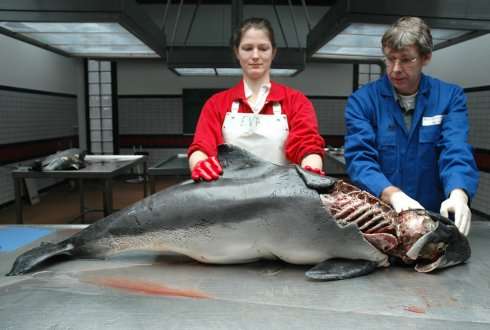
Harbour porpoises eat approximately ten percent of their body weight in fish per day. Their diet mainly comprises gobies, whiting, sand lances, herring and sprats. These mammals are in constant danger of starvation. Other major causes of death include drowning after becoming entangled in fishing nets on the seabed, and being hunted and eaten by grey seals. These findings are from research carried out by Mardik Leopold from IMARES Wageningen UR. He will be awarded a PhD by Wageningen University on 20 November.
These days, harbour porpoises are common in the Dutch waters of the North Sea. The size of the population (approx. 50,000) is on much the same scale as that of deer in the Netherlands. All these porpoises need to eat every day, but little was known about what they eat, whether they all eat the same, the differences in their diet, and whether there are enough fish in the sea for all these porpoises. For his PhD research, IMARES researcher Mardik Leopold tried to find out whether the features of individual porpoises (age, health) and external conditions (season, location) affected their diet. His method involved studying the stomach contents of 829 harbour porpoises that had washed up on the Dutch shores between 2005 and 2014.
Oily fish
If they are to stay warm in the cold sea, harbour porpoises need to eat approximately ten percent of their body weight in fish every day. These fish need to be in good supply, preferably easy to catch and calorific. Leopold found a total of 70 different types of prey in the animals' stomachs. Four types were dominant: gobies, cod-types (particularly whiting), sand lances and herring-types (herring and sprats). In de Westerschelde (the estuary of the Scheldt river), the porpoises were also found to eat migratory fish such as smelts. "As the water of the Westerschelde becomes cleaner, we are seeing increasingly more migratory fish and porpoises," says Leopold. "The ones we found were thin, so it must still be quite difficult for them to survive in this river."
The first solid food that young porpoises eat consists of gobies, explains Leopold. "As they get older and stronger, they need larger fish, such as whiting, and oily fish, such as herring, sprats and sand lances. Gobies only weigh an average of 1 gram, so a young porpoise weighing 20 kilos needs 2,000 gobies a day. An adult porpoise can weigh 50 kilos, so gobies really aren't enough. They would need to consume 3.5 gobies per minute, 24 hours a day. This is why they switch to larger, more calorific prey."
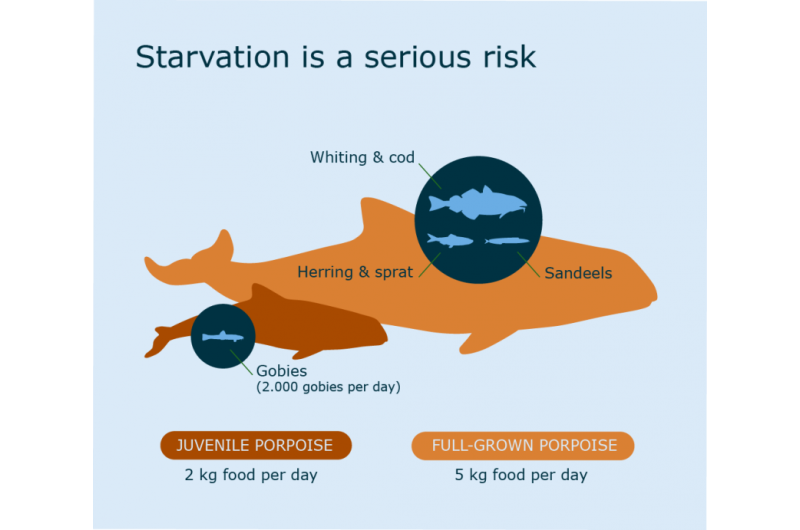
Thin
Healthy porpoises are fat; they eat relatively large amounts of oily fish. The thickness of their blubber varies with the season; porpoises are thinner in the summer. The death rate is also highest during the summer months. Those washed up included a considerable number of emaciated animals. The thinner the porpoise, the fewer oily fish it had in its diet. Leopold cannot say what is cause and what is effect. "This really is a chicken and egg argument: is a thin porpoise unable to catch oily fish, or does it become thin because it cannot catch oily fish?"
Causes of death
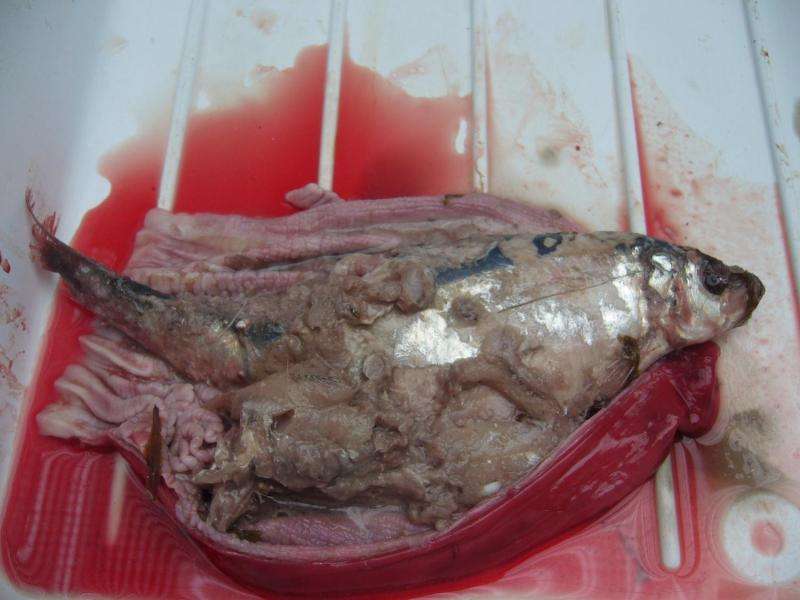
In addition to starvation, drowning in nets on the seabed (static nets) is one of the main causes of death among porpoises. However, it is difficult for a pathologist to establish drowning as a cause of death in washed up harbour porpoise cadavers. The stomachs of porpoises that have drowned in fishing nets largely contain bottom fish, which makes drowning a likely cause.
A third important cause of death is predation by grey seals. Leopold was able to establish this with the help of specialised vets and microbiologists by carefully analysing bite and claw wounds, carrying out DNA tests in the wounds of the porpoises and analysing their diet. Harbour porpoises are in constant danger from grey seals. Half-eaten porpoises were found along the entire length of the Dutch coast. They were caught in deep waters (obvious from the bottom fish in their stomach), as well as higher up in the water column (obvious from the higher-swimming fish, such as herring and sprats in their stomach).
-
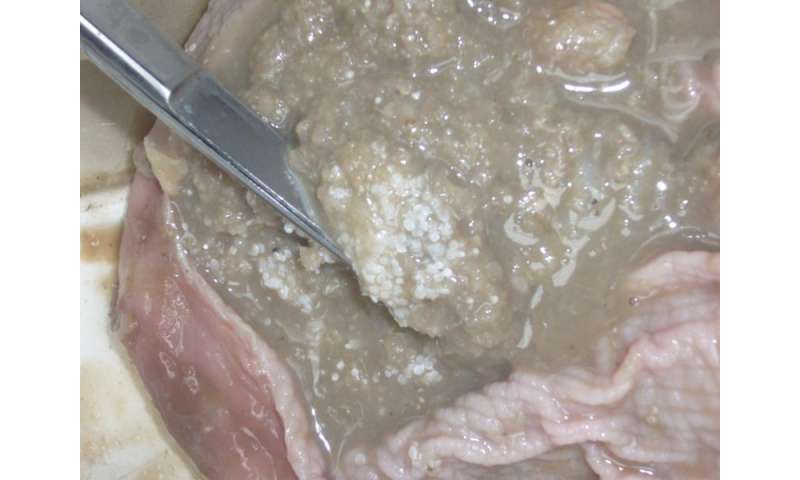
Stomach full of fish pulp and otoliths (white dots) from numerous gobies. A typical stomach for a young harbour porpoise. Credit: Annika Krauthof -
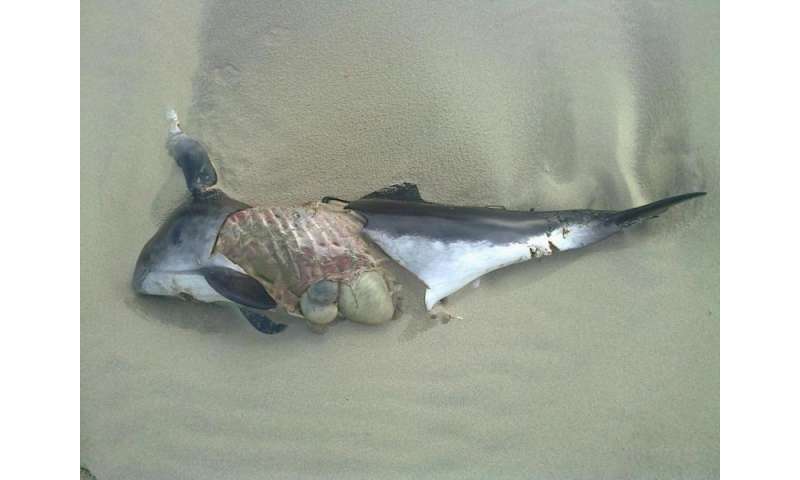
Harbour porpoise caught by a seal. The stomach is protruding because seals do not eat this part of their prey. Credit: Cees van Hoven
More information: The thesis is available online: www.wageningenur.nl/upload_mm/ … 998ce86329f1_Leopold%202015%20PhD%20thesis%20Eat%20and%20be%20eaten-Porpoise%20diet%20studies.pdf
Provided by Wageningen University




















